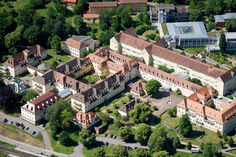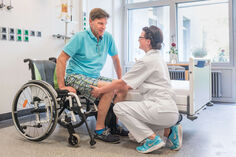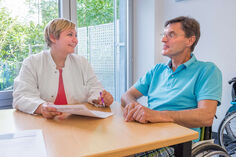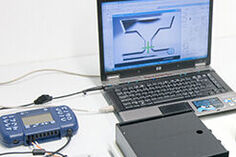Bridging the axonal divide with cell transplantation and biomaterials
The chiasm that forms following traumatic axonal injury to the spinal cord is highly prohibitive to axonal regeneration and recovery. We utilize cell transplantation (Schwann cells, astrocytes, fibroblasts, stem cells and fetal cells) and biomaterials (alginate-based anisotropic capillary hydrogels) either separately or in combination to bridge this divide and provide physical support for the axons. To stimulate axonal growth across this support network we also provide neurotrophins and growth factors. We are now combining this with pharmaceutical treatments to further stimulate axonal growth across the bio-support bridges.
Collaboration with Dr. Rainer Müller (Regensburg) and Dr. Armin Blesch (Indiana University, Stark Neurosciences, USA)
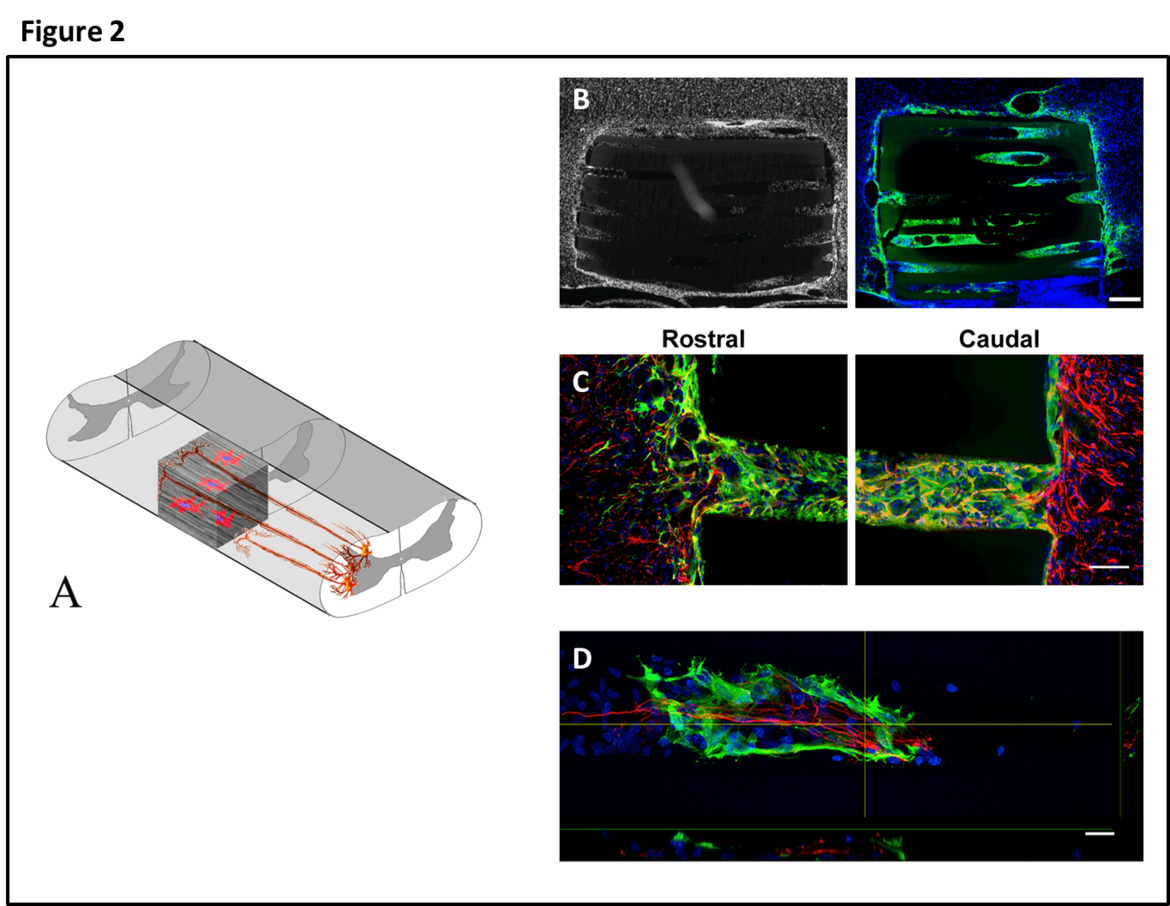
Schematic diagram depicts lateral hemisection with insertion of hydrogel seeded with cells (A). Implantation in vivo shows hydrogel channels filled with green fluorescent protein (GFP) positive cells (B). These cells fill the entire length of the channels (C). The GFP cells appear to provide support for growing axons (red) (D).
Publications:
Schackel T., Kumar P., Günther M., Liu S., Brunner M., Sandner B., Puttagunta R., Müller R., Weidner N. and Blesch A. (2018) Peptides and Astroglia Improve the Regenerative Capacity of Alginate Gels in the Injured Spinal Cord. Tissue Eng Part A. Dec 28. [Epub ahead of print] Link to article.
Liu S., Schackel T., Weidner N. and Puttagunta R. (2018) Biomaterial-Supported Cell Transplantation Treatments for Spinal Cord Injury: Challenges and Perspectives. Front Cell Neurosci. Jan 11;11:430. Link to article.
Liu S, Sandner B, Schackel T, Nicholson L, Chtarto A, Tenenbaum L, Puttagunta R, Müller R, Weidner N, Blesch A. (2017) Regulated viral BDNF delivery in combination with Schwann cells promotes axonal regeneration through capillary alginate hydrogels after spinal cord injury. Acta Biomater. Sep 15;60:167-180. Link to article.
